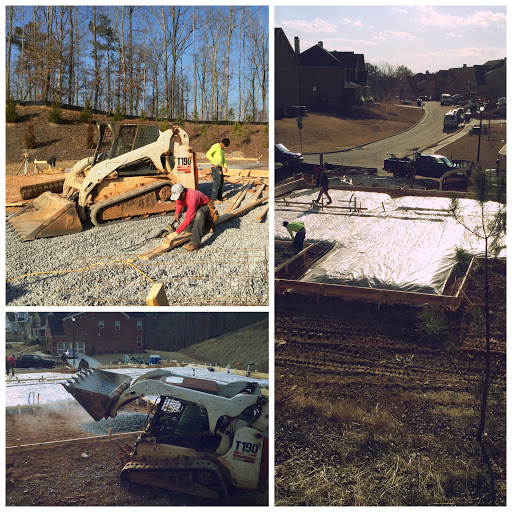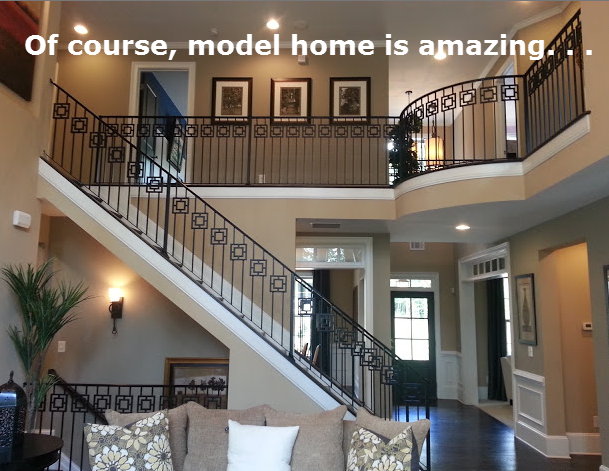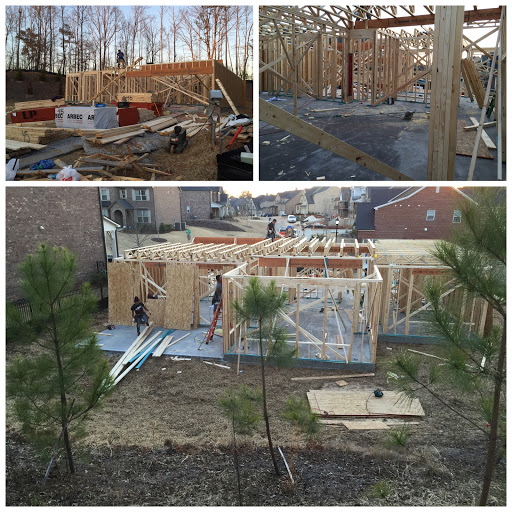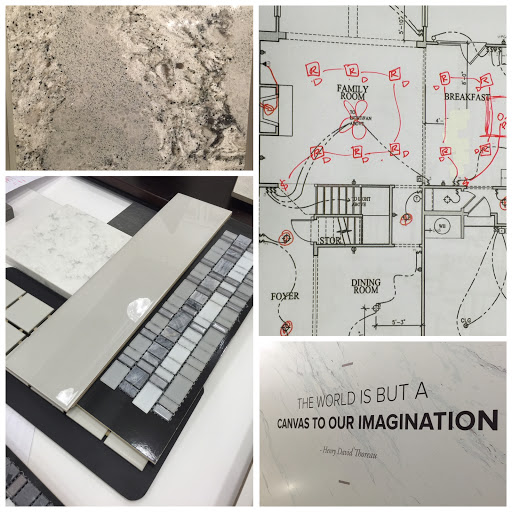am moving
My wife and I lived in the current house for 11 years, and we are moving closer to her work. The new house will be 30% larger, and a whole lot nicer. The big difference is that we are building it from the ground up. So we choose the floor plan, exterior brick color, hardwood flooring, lighting, fixtures, tiles, everything. It’s fun and exhausting. A 4-5 month process which honestly, reminds me a lot of consulting.

What are the parallels between a house & a consulting project?
Both are big purchases and requires a fair amount of effort, money, and expectations.
1. It starts with logic
We spent months visiting different locations and builders. We had a list of criteria ranging from house location, size, layout, lot, price, and finishes.
- Used zillow.com to look at comparable prices
- Looked at the county’s zoning plans to see where the new roads would be built
- Talked to realtors and read reviews online on the quality of the builders.
- Talked to friends who built houses. Did the research
- Do we make a super logical case for the client’s to buy from us?
- Is there a clear return-on-investment?
- If the client wanted to explain to his/her boss WHY they should hire us, is that message easy to tell?
2. Emotions matter
We first thought of moving about a year ago – but instead used that money to buy another rental property. Priorities changed. Then I got an email saying that the last lot in one of our “target” neighborhoods was on the market. L.A.S.T. C.H.A.N.C.E. and I remarked to my wife, “I don’t want to wait another 5 years to live in a house that I love.” That’s not really logic, right? I am being a baby, right? That’s emotions, not logic.
- Do we understand the client’s pain points?
- Do we know the source of the client’s heart-ache, or fear.
- Have we addressed the head,heart, and hand of the problem?
3. First impressions matter
Of course the model homes where the sales office is located, looks amazing. This model home was 60% more expensive than the one bought – but of course, we anchor on what they see on the showroom floor.
- Are the proposals, marketing materials, and qualifications impressive?
- What is the first impression the client gets from our website, conferences, and interactions?
- Are they as impressive as this model house?

4. Team of professionals
During the process, the salesperson, the designer, and the builder were all professionals. They listened well, demonstrated their experience and gave me good counsel. More importantly, they acted as a cohesive team complimenting each other’s work and implicitly giving me the confidence that I made the right choice.
- Are we supportive and complimentary of our team members?
- Do we know each other’s roles and direct the client to the right place?
- Does the client feel like we are providing a total solution – or just continually “passing the buck” ?

5. A concierge experience
This house is a middle-of-the-road customized house. We chose a lot of the design feature, but we did not create the architectural plans. In other words, 80% of the plans are set, and we get to alter the 20% which is most obvious to your eyes. . . covered patio, color, design, cabinets, countertops, fixtures, lights, etc.

Still, the sales, designer, and builder made us feel special. They took a routine task – remember there are 50+ of these homes in this neighborhood – feel like a personal, customized concierge process.
- Are we making this a unique experience for our clients?
- Do they feel “special” and catered to?
- Do we rely too much on templates, and copy/paste materials?
- How to help them feel like they are cared for?
6. Keeping the timeline
The builder was a bit maniacal about the timelines. They reminded us that the design selections had to be done by January with materials ordered. The walk-through for the electrical, plumbing, and mechanical had to be done by March. It was a drum beat of deadlines. They kept the process moving. This all required sacrifice – multiple days off of work for just the design center visits – but kept us engaged and working with the builder.
- Do our statements of work (SoW) accurately convey the timeline expectations?
- Are we asking for enough accountability from the clients?
- Are we just letting the timeline slip because we don’t want to offend the client – at the expense of project and profitability?
7. It always costs more
We got an enormous 75% discount on $ – -, – – – of upgrades, and yet, we blew right past that amount and spent even more. It happens. There is always more that you want done with the house.
- Are we pricing the work so that the client can “add on” more work and features, if they want to?
- Does the quality of the work, and the ability to get more results, create incentives for them to buy more?
- Is our work worth buying more of?
8. Surprises suck
Even though we communicated continuously, there were still surprises. . . things not included in the price, features that we could not have, and even a miscalculation in the price.
- Are we unknowingly or unnecessarily surprising our clients?
- What are we doing to set expectations and exceeding them?
9. Beware of self-doubt
The house is currently being built and we are excited about it. And yet, we still went to an open-house for a comparable house in a neighborhood that we have been watching. Call it buyer’s remorse or just self-doubt. We want to know that we made a good decision. We are gauging our sunk / opportunity cost.
- What can we do to continually remind the client that they made the right choice?
- Are we making sure the client is saving face?
- Are we making the client successful?
10. Being a part of the process
Watching the house being built is one of the most satisfying and cathartic parts of the process. It’s deeply satisfying to see the quality of the workmanship behind the walls. The builder spent 90 minutes walking us through the house and showing us how they reinforce the beams, caulk the seams, and lay out the electrical. It makes you proud of the house, and more importantly, your decision.
- Are we sufficiently showing the client the quality of the work throughout the process?
- Are we just disappearing for a few months, and surprising them at the end with a deliverable?
- Are we getting the client’s engagement throughout the process?

Congratulations on your new relocation! Love the consulting parallel!
I guess my decision that was similar to the ‘self-doubt’ consulting lesson (I would call it more of ‘instilling confidence’ lesson) was purchasing my flight tickets. I constantly weighed the pros and cons of the timing, pricing, layover period, seating, etc. Unfortunately, not all flights are perfect. I literally pored through multiple traveling sites for reviews and recommendations.
Thinking about it, I can put myself in the client’s shoes because these awesome travel sites are like consultants. They really do a great job of reassuring me that I made the right choice by their comparison features and narrowed down searches (80-20 rule perhaps?)
Anyway, keep up with the great blog posts! Have a great move-in!
Thanks for reading, and yes, seems like more of consulting is. . . giving the audience the logic, transparency, and tools to make better decisions. Less about mandating an answer, and more about helping the client think through the problem. Take care.
Welcome! You take care too.
This post read like a mini-business book. Lots of principles that are applicable to almost any business. Congrats on your new house; you both have worked hard for it! Great post.
Thanks Chuck. Have a great spring.